|
McCloud Customers
Diatomaceous Earth and Dicalite Corporation |
|
|
|
Background Between 2 and 10 million years ago the area around what is today Lake Britton lay at the bottom of an inland sea. This body of water had a high population of a hard shelled algae known as diatoms. The remains of these diatoms accumulated at the bottom of the sea and fossilized, which produced many vast deposits of what would become diatomaceous earth. Humans have discovered several uses for diatomaceous earth. The predominant use is in filtration systems for various substances such as swimming pool water, beer, syrups, and sugars. Diatomaceous earth is also used as an abrasive compound in materials like toothpaste and metal polishers, as an insecticide, as an absorption agent in spill clean-ups and cat litter, and as a thermal barrier. Early Shippers The commercial qualities of the deposits around the Pit River were first noticed in the mid-1920's. However, the remote location and lack of economically viable transportation initially prevented any development. The situation changed when Pacific Gas & Electric Company and the McCloud River Railroad built the Pit River Railroad in 1921. Carl Phelps headed a new company, the Mt. Shasta Silica Corporation, to take advantage of the transportation provided by the railroad. Mt. Shasta Silica performed some mining activity and shipped a few carloads out over the Pit River Railroad, but the company failed. Diatomaceous earth made its next appearance on the McCloud Rails in the late 1950's or early 1960's when a small firm opened a reload at Arkrite. The railroad built a short spur, and the mining company built a small reload. This traffic lasted for only a few years, and by the early 1970's the railroad had retired the Arkrite spur. Dicalite Corporation The 1970's and early 1980's saw a lot of speculation about the future of the deposits. The Western Pacific marketing and economic department evaluated many proposals for shipping diatomaceous earth from the Burney area out over their railroad through the late 1970's, but the pricing policies involved in getting carloads from the McCloud River Railroad to the Western Pacific at Nubieber made this traffic cost prohibitive. Things finally started to fall into place in the mid-1980's. Dicalite Corporation, a division of Grefco Minerals, Inc., opened a new mining operation off of the north shore of Lake Britton. Dicalite become interested in shipping by rail, and negotiations became serious in the later part of 1986. On 22 September 1986 the McCloud River Railroad operated a special passenger trains using two diesels, three leased coaches, and the railroad's VIP caboose. The special took two busloads of railroad and Dicalite officials on a tour of the line from Cayton to McCloud. The tour sold Dicalite on rail service. Both Dicalite and the railroad agreed that the mining company would best be served by a spur directly to the plant. The old power company roadbed that ran to Pit 3 covered most of the distance already, and the railroad ran a survey of a branchline roughly following this route. However, nesting bald eagles along the shores of Lake Britton effectively prevented any new railroad construction. The two companies then agreed to establish a reload at Cayton siding, which sat right next to Clark Creek road, the primary access route into the mine. By late 1986/early 1987 the reload was ready to open. Dicalite shipped its products in two forms, either as bulk product or in bags. The bulked product created a special loading challenge, which the company solved by building an underground network of pressurized pipes that would be used to blow the product from trucks into railcars. Dicalite leased a fleet of pressurized covered hoppers to transport the bulk product by rail. The railroad mounted a former Camino, Placerville & Lake Tahoe railroad boxcar on blocks next to the siding to facilitate the transfer of bagged product from trucks to railcars. Dicalite became an important shipper on the railroad, and the first substantial originator of outbound loads not related to the timber industry the railroad ever had. The mining company shipped an average of 20 cars each month from Cayton, mostly in bulk form. The sporadic loads of bagged product predominately moved in the railroad's fleet of boxcars converted from all-door cars. By the mid-1990's the bagged shipments disappeared, as Dicalite moved all of this traffic to intermodal containers that left the area on trucks. The diatomaceous earth shipped by Dicalite saw many uses, including the stone washed jeans and food and beverage industries. Approximately thirty percent of Dicalite's products were exported to customers in Japan, Korea, New Zealand, Russia, Sweden, Belgium, Germany, England, and others. Dicalite filed the only protest to the McCloud Railway abandonment petition in 2005, a protest that the Surface Transportation Board easily dismissed. Dicalite shipped only 15% of its products out over the railroad, and what they did ship was completely inadequate to support continued operations. Dicalite continued to ship until the McCloud Railway instituted a $350 per carload surcharge on all traffic moving to or from Burney in mid-June 2006. By this point Dicalite had a new reload on the BNSF at Nubieber, CA, ready to go, and the four hoppers on spot at Cayton remained empty. The last McCloud Railway freight to Burney at the end of June took the four empty cars back to McCloud. Click here for Grefco Minerals website
|
|
|
| Photos In August 2000 Lee Christopher gained permission to tour the various McCloud shippers active at the time. He took many photographs, mostly to assist him with creating his fine McCloud Railway layout. The pictures he took of the Dicalite facilities are displayed below. 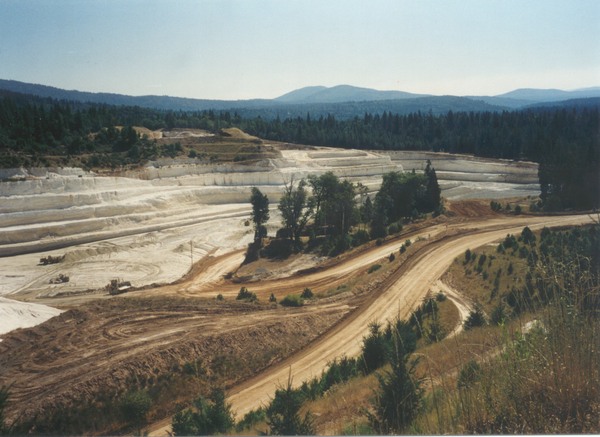 |
|
The Dicalite quarry. |
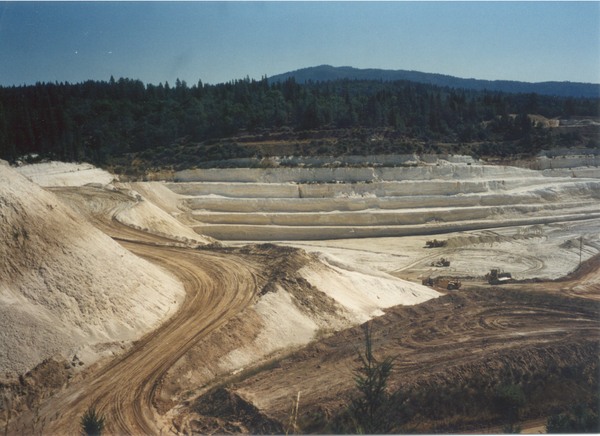
|
|
Another view of the Dicalite quarry. |
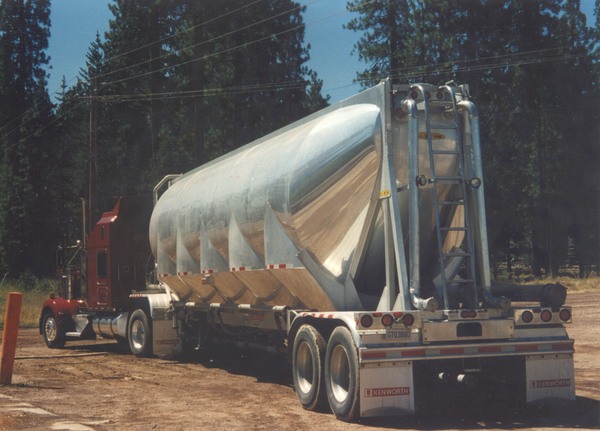 |
|
One of the pressurized trucks used to transport the bulk product from the mine to the reload. |
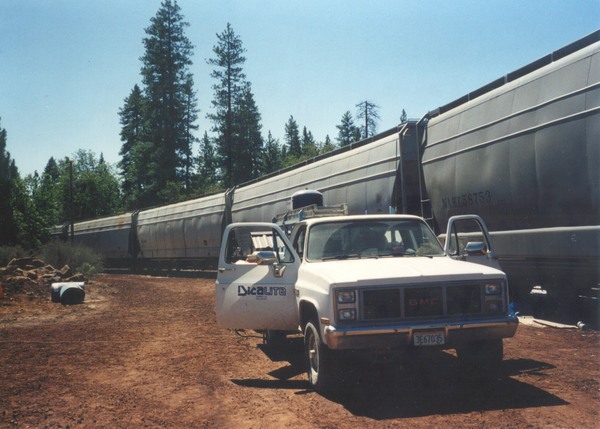 |
|
A Dicalite crew loading covered hoppers at the Cayton reload. |
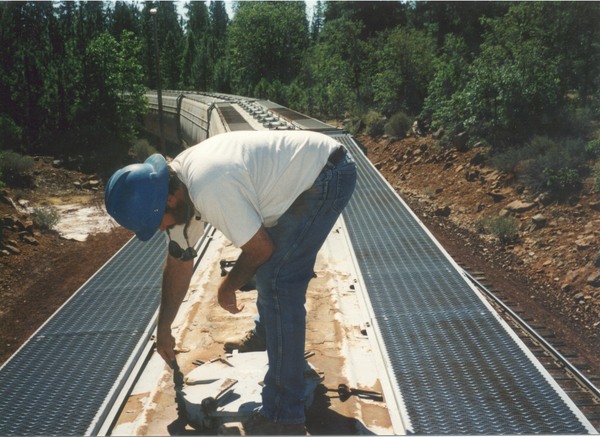 |
|
A Dicalite employee making a final inspection of a loaded car prior to releasing it to the railroad. For many years Dicalite would place waybills for loaded cars in a mailbox mounted on one end of the boxcar, where the train crews would pick them up. |
|
|
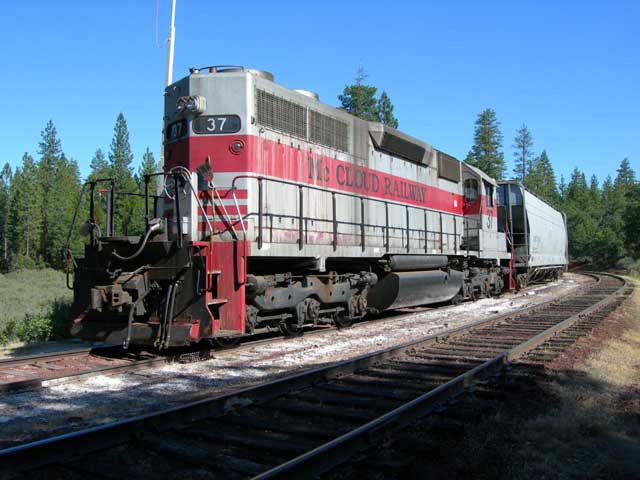 |
|
Two weeks from the end...McCloud Railway #37 parked on the siding next to the last four Dicalite hoppers two weeks before the end of operations to Burney. Time will tell if the new owners of this part of the railroad will operate the property, and if Dicalite will become a shipper if they do. |
|
|